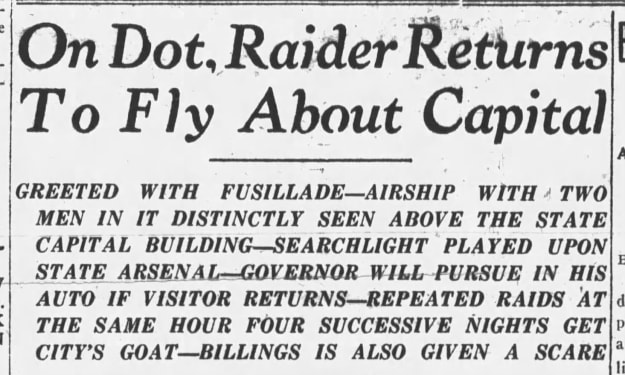The Condor and the Cuy
A Tradition

The sun rose and set by the wings of the condor—Inca legend.
In the days long before the Incas ruled Tawantinsuyu, the condor was a mighty bird. Mightier than the condors of today. Then the condors ruled the skies.
And condors sang. They were a pájaro cantor, a songbird.
The sun rose and set by the wings of the condor. The great condor who daily carried the sun across the sky nested in the mountains at Condor Guachana, condor's nest. This is one of the three volcanic cones on the boiling mountain of Pichincha.
On the side of Pichincha, Qutimbe, son of the god Quitu, had established the city of Quito, in the Kingdom of Quitu. The Incas conquered the city in 1487.
The Spaniards made the city theirs in 1534. The mountain objected to the Spanish presence. It erupted in 1534, 1539, 1577, 1588, 1660, 1662, ... 1859, .... I cannot count all the times the mountain objected. But back to the condor.
Carrying the sun across the sky was hard, hot work. It made the condor very hungry. A cuy was just the right size for a bite to eat, and cuy are delicious. But a hungry condor could eat many cuy during a day, so condors endangered the very existence of cuy.
I should explain that cuy is the South American term for guinea pig, and the guinea pig originated in the highlands of the Andes Mountains. But before we discuss the cuy, let me tell you more about the condor.
In Across South America (1911), the Yale-based explorer Hiram Bingham described one encounter with a condor in the Andes. He had made an exhausting climb to the top of a ridge.
"Here," he wrote, "we were discovered by a huge condor who proceeded to investigate the invaders of his domain. Apparently without moving a muscle, he sailed gracefully down in every narrowing circles until we could see clearly not only his cruel beak and great talons, but even the whites of his eyes."
"We had no guns and not even a club with which to resist his attack," Bingham continued. "It was an awe-inspiring moment, for he measured at least twelve foot from tip to tip of wing. When within forty feet of us he decided not to disturb us, and seemingly without changing position of a feather, soared off into space."
Near the summit of Condorkanqui was fought the last major battle of all the South American wars of independence. The battle was below the summit, on a plain above the valley of the Ayacucho River and a full 10,000 feet above sea level. It was where the condors fly.
Being a relatively small animal, each cuy was a perfectly polite-size mouthful for the condor. That was a problem for the cuy. They lived in constant fear. They died young. Being delicious was not entirely a good thing from their perspective.
We're talking about the way far past when the condor was bigger than today and when the cuy too was bigger than today. What the cuy's size millennia ago is unknown, other than that it was bite size for the mighty condor that carried the sun across the sky daily.
In nearby Uruguay paleontologists have found a fossil that suggests a far distant ancestor of the guinea pig was a one-ton rodent! But that was in Uruguay. In the Andes even a big cuy was still a cuy, and in the Andes a cuy is NOT a rodent. It's dinner.
The dinner of the condor.
Out of desperation, wild cuy turned to people. The cuy and the people formed a pact. They signed a contract. In return for living in the shelter and under the protection of people, cuy would become domesticated. They would live freely with people. They would have families. They would live to an age unimaginable in the wild.
People would allow all to reach adulthood and multiple.
In return, cuy would provide delicious meat for people. They would have long life relative to life in the wild, and their domesticated life would not encumbered by old age. They would be safe and happy and ultimately useful.
A little cuy or two makes a fine meal for a person. At adulthood it weighs between one and two pounds, a fat one maybe a little more. Moreover, domesticated cuy has more meat and more tender meat than the wild ancestors. Like the condor, people like its taste, which is closer to rabbit than chicken.
The peoples of the highlands were very pleased indeed with the deal they had made with the cuy. They have kept the pack to this day.
A 17th century Peruvian chronicler, Guaman Poma de Ayala, wrote that the Incas had sacrificed a thousand white cuy along with a hundred llamas in Cusco's main plaza each July so that the sun would not burn and the water not flood the fields where crops grew.
Even the Spaniards honored the contract between people and cuy.
From the beginning of the Spanish colonization, the Catholic Church suppressed Indian religious icons. But the guinea pig was spared. In fact, Spanish churches displayed Indian illustrations of the Last Supper that show Jesus and the twelve disciples eating roasted cuy.
And the cuy have thrived under the terms of the contract with people. 65 million a year. That's the figure given by the government of Peru. 65 million cuy a year are consumed in just Peru, mostly by rural people in the highlands, descendants of those ancient people who wisely agreed to domesticate the cuy.
But the condor is no longer a pájaro cantor, a songbird. It does not sing. That is because it still misses the delicious cuy!
About the Creator
Anne Millbrooke
Born in Oregon, raised on the coast of Washington, Anne went east to college — to Boise State in Idaho. Now living in Montana, she travels by camper van throughout the region.
Enjoyed the story? Support the Creator.
Subscribe for free to receive all their stories in your feed. You could also pledge your support or give them a one-off tip, letting them know you appreciate their work.






Comments
There are no comments for this story
Be the first to respond and start the conversation.